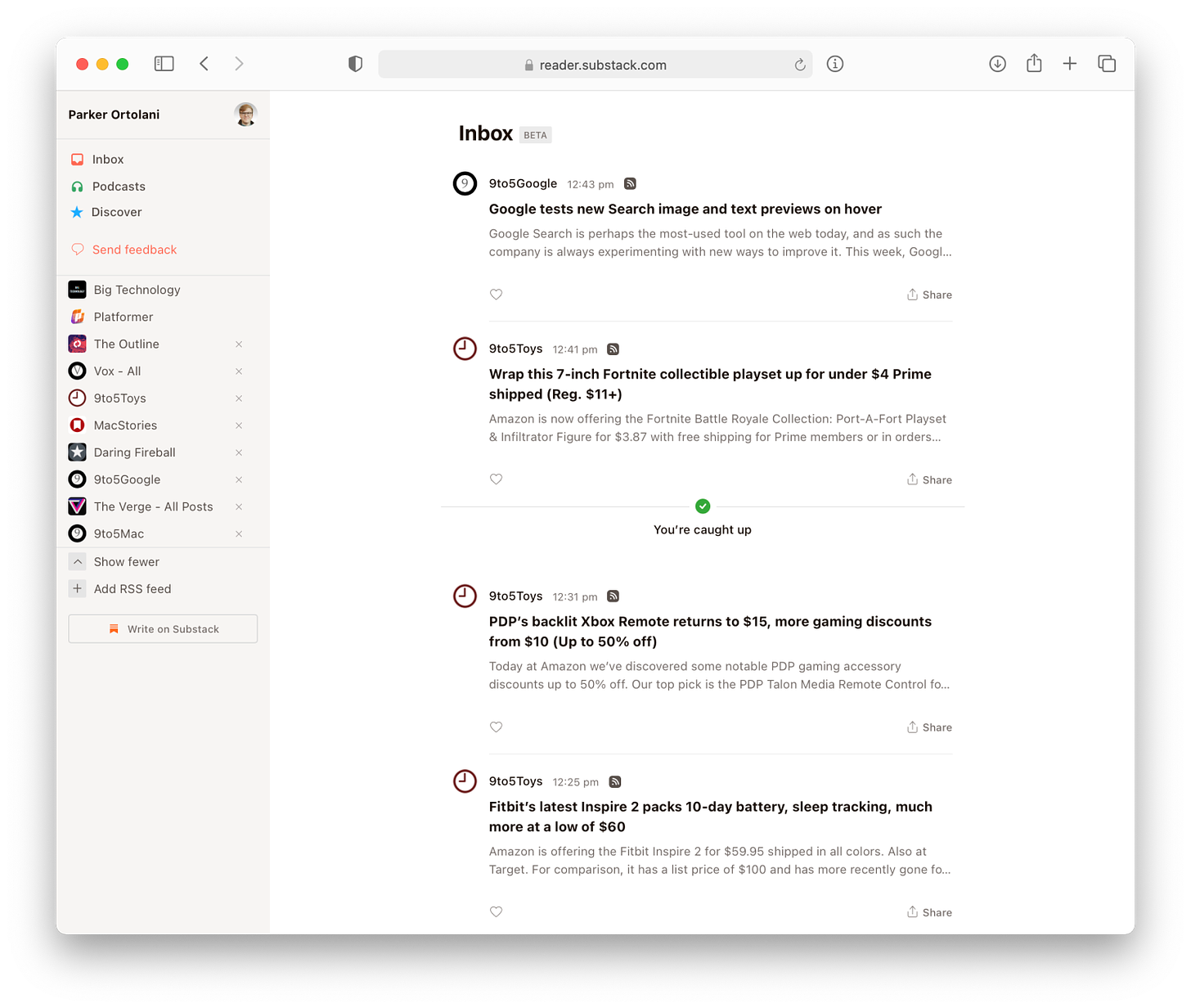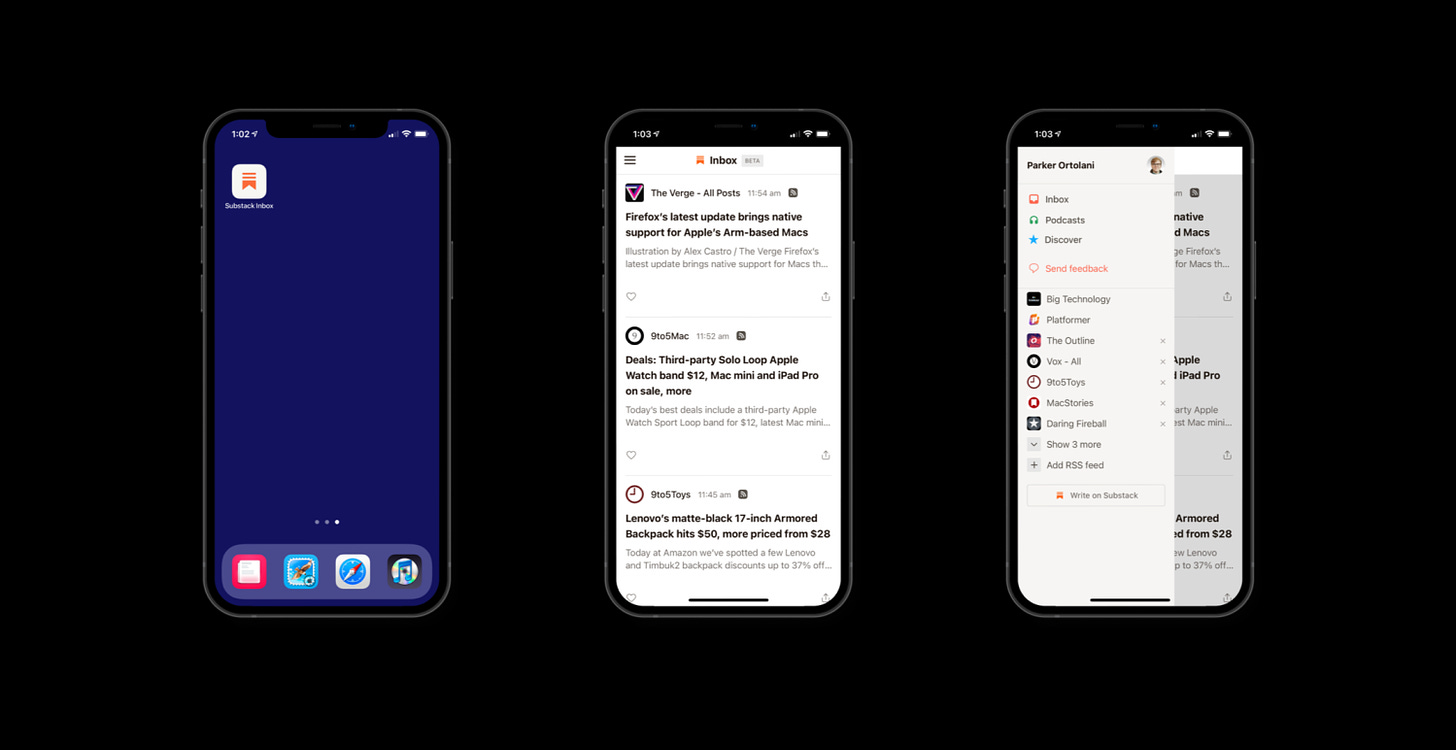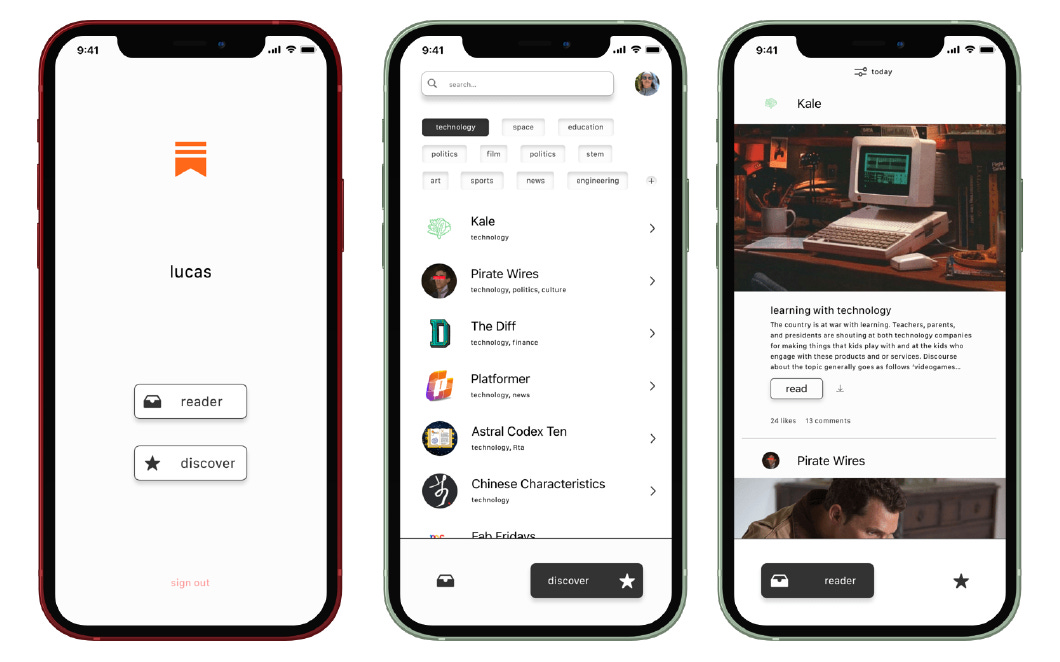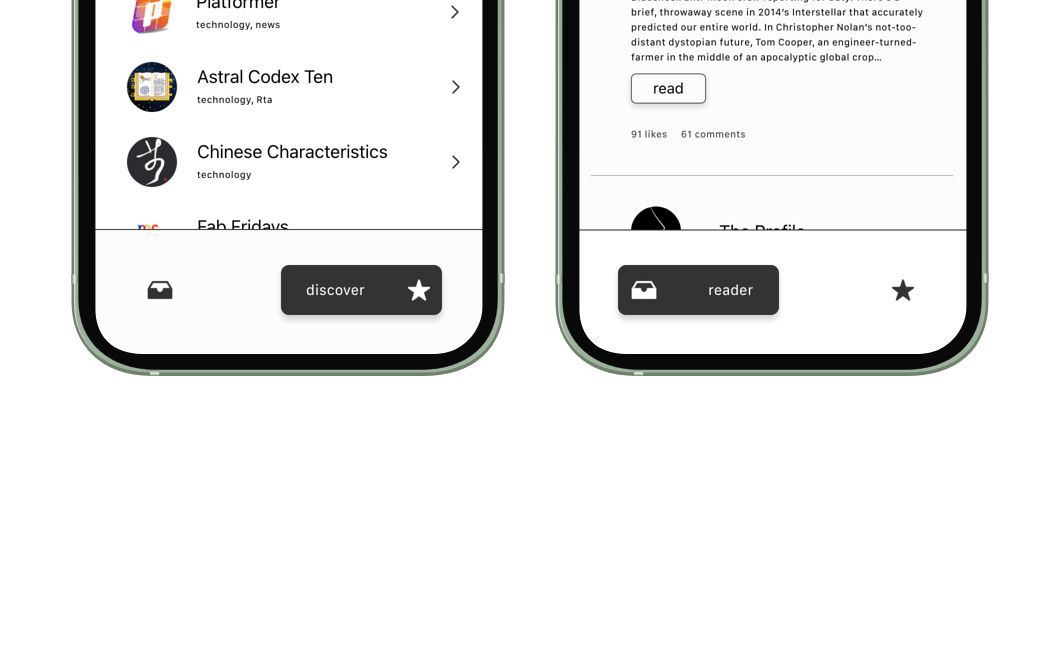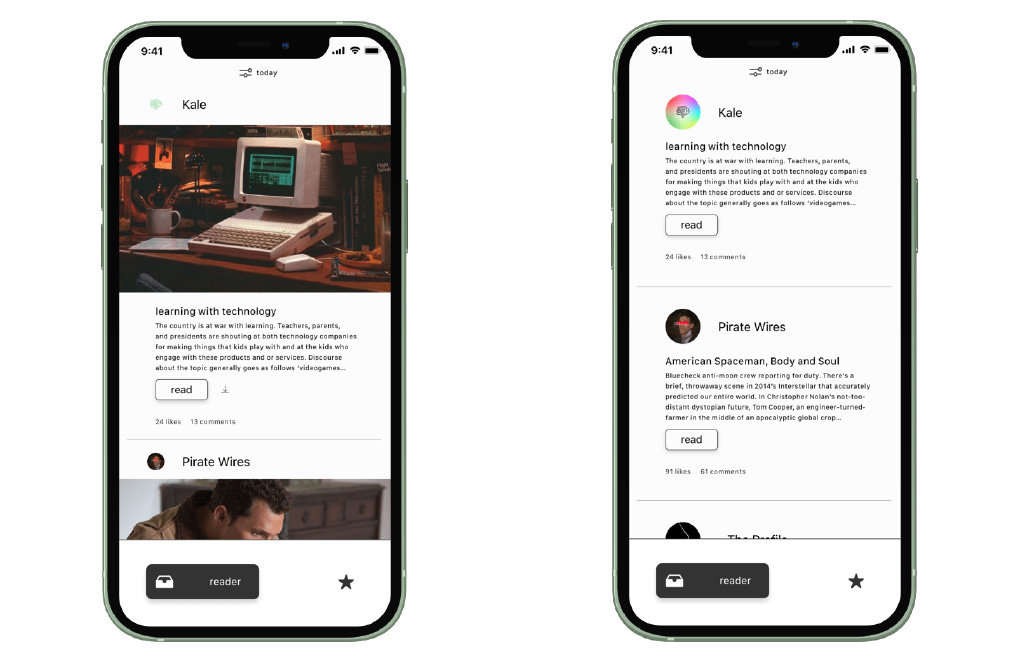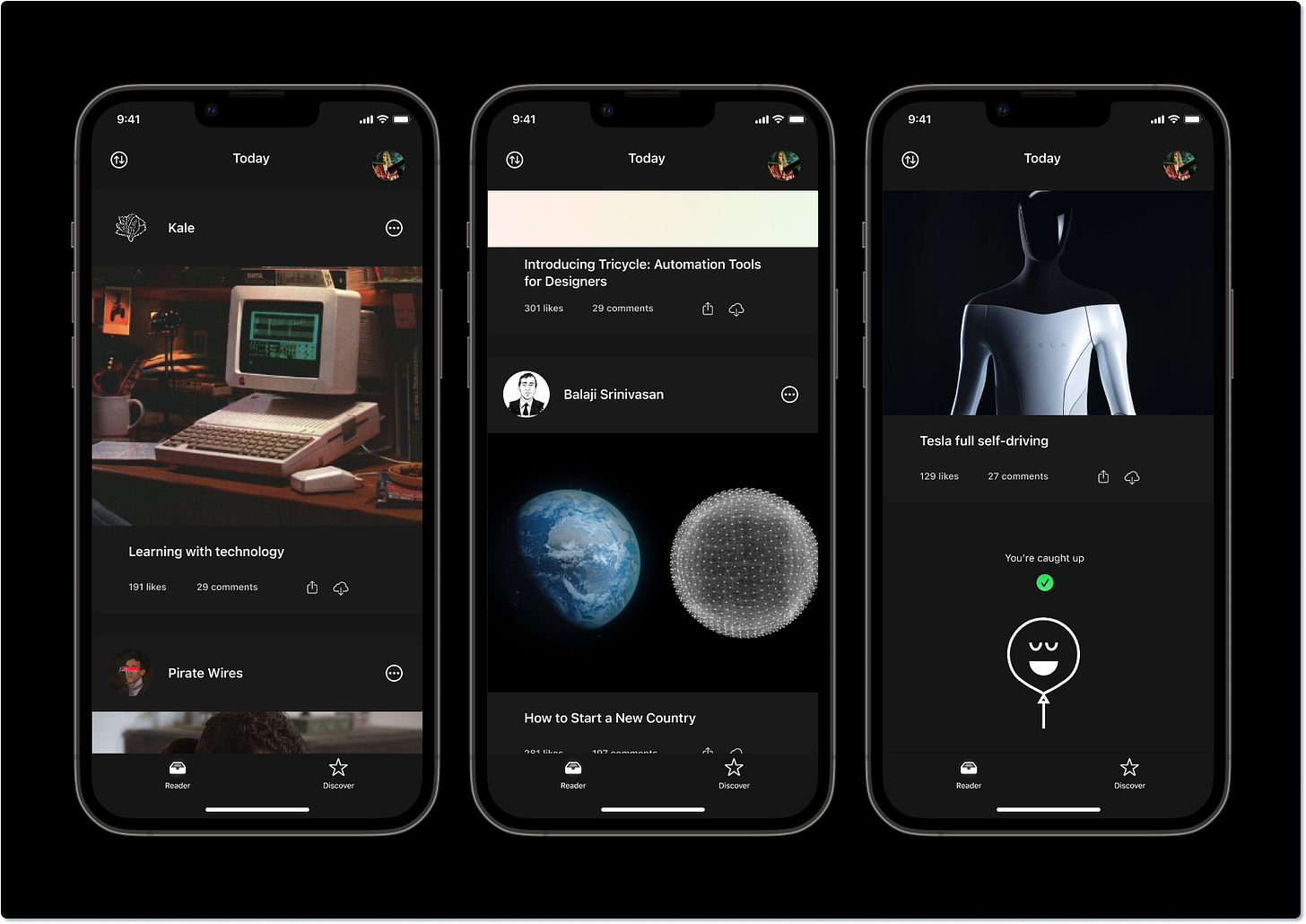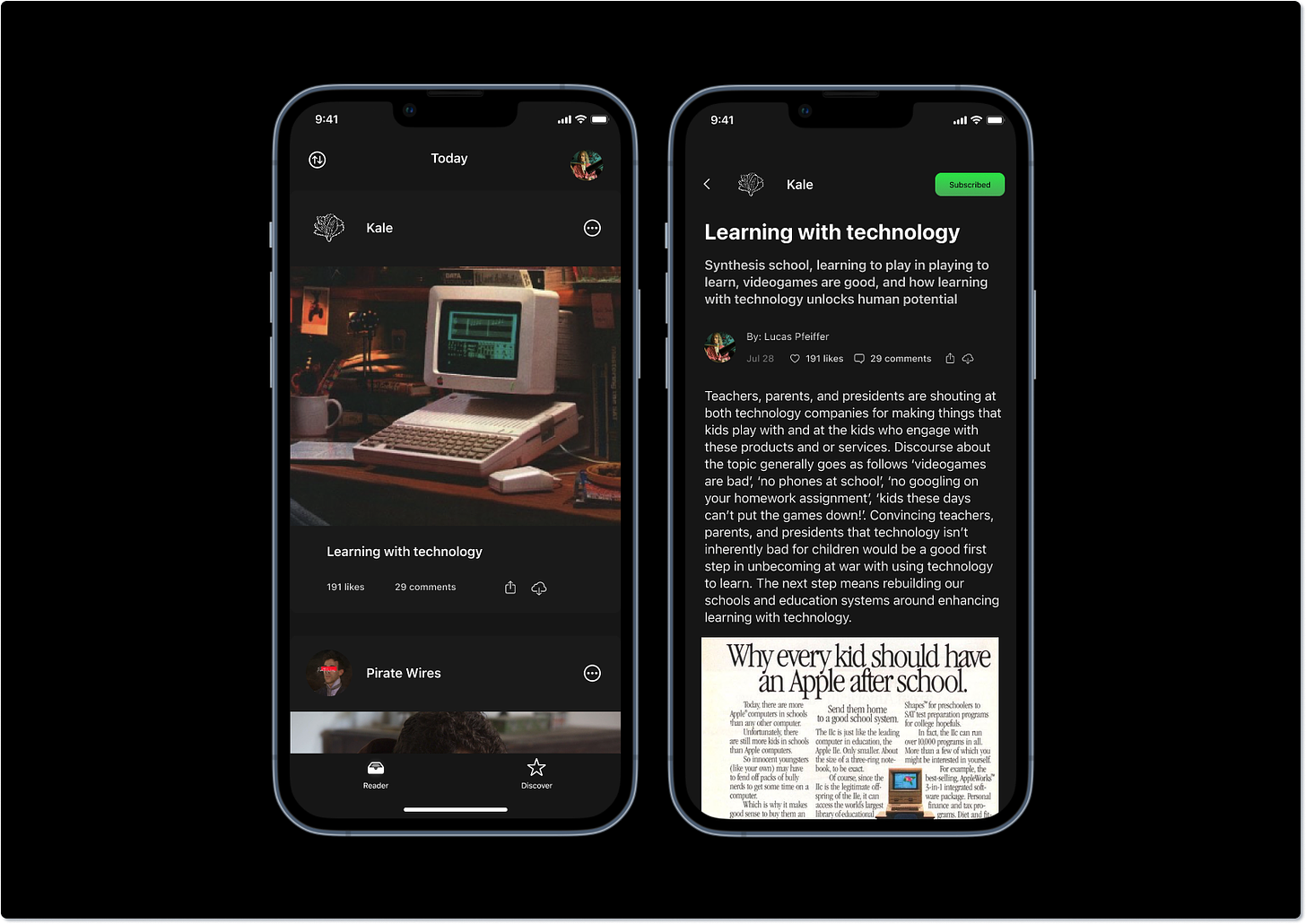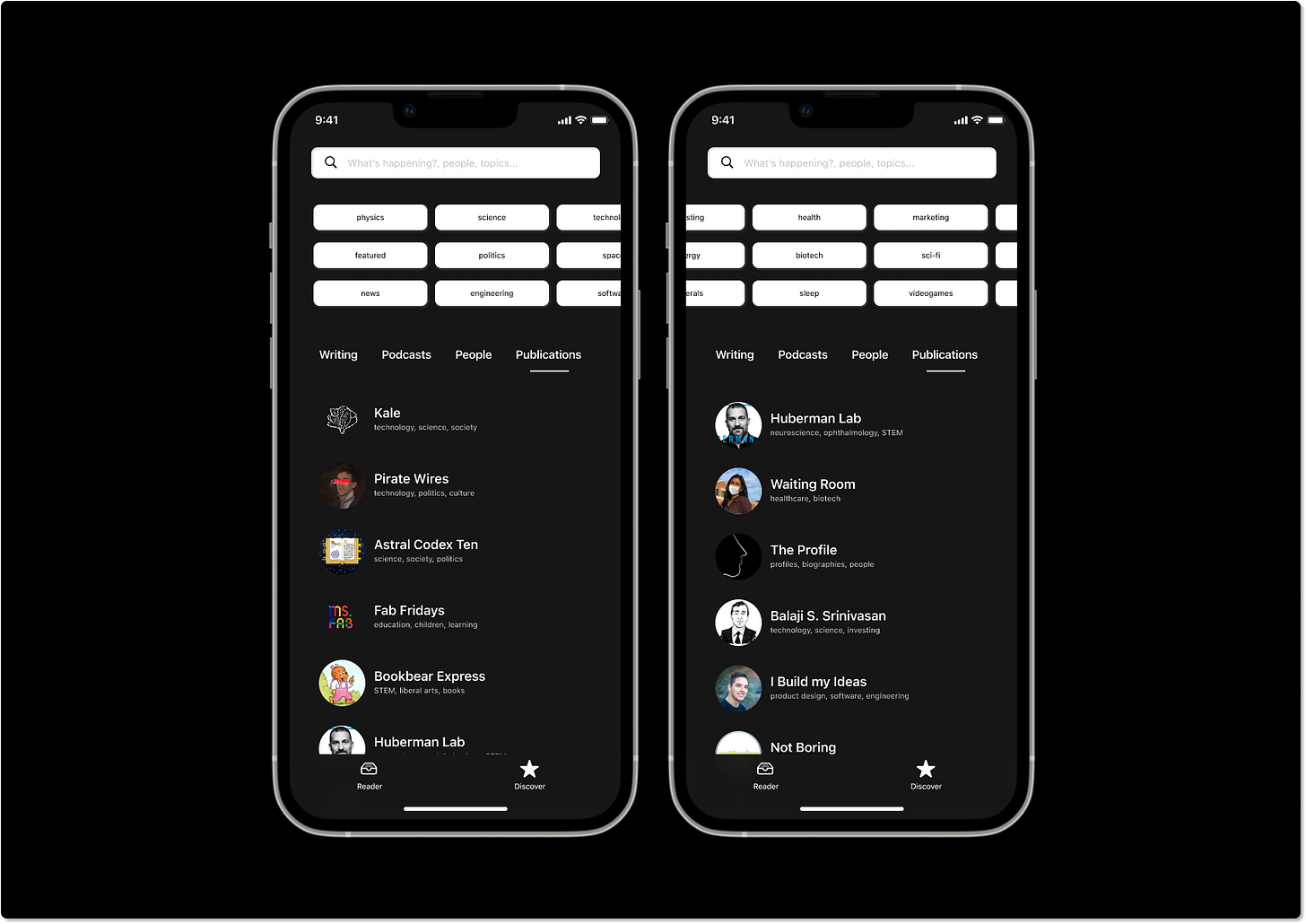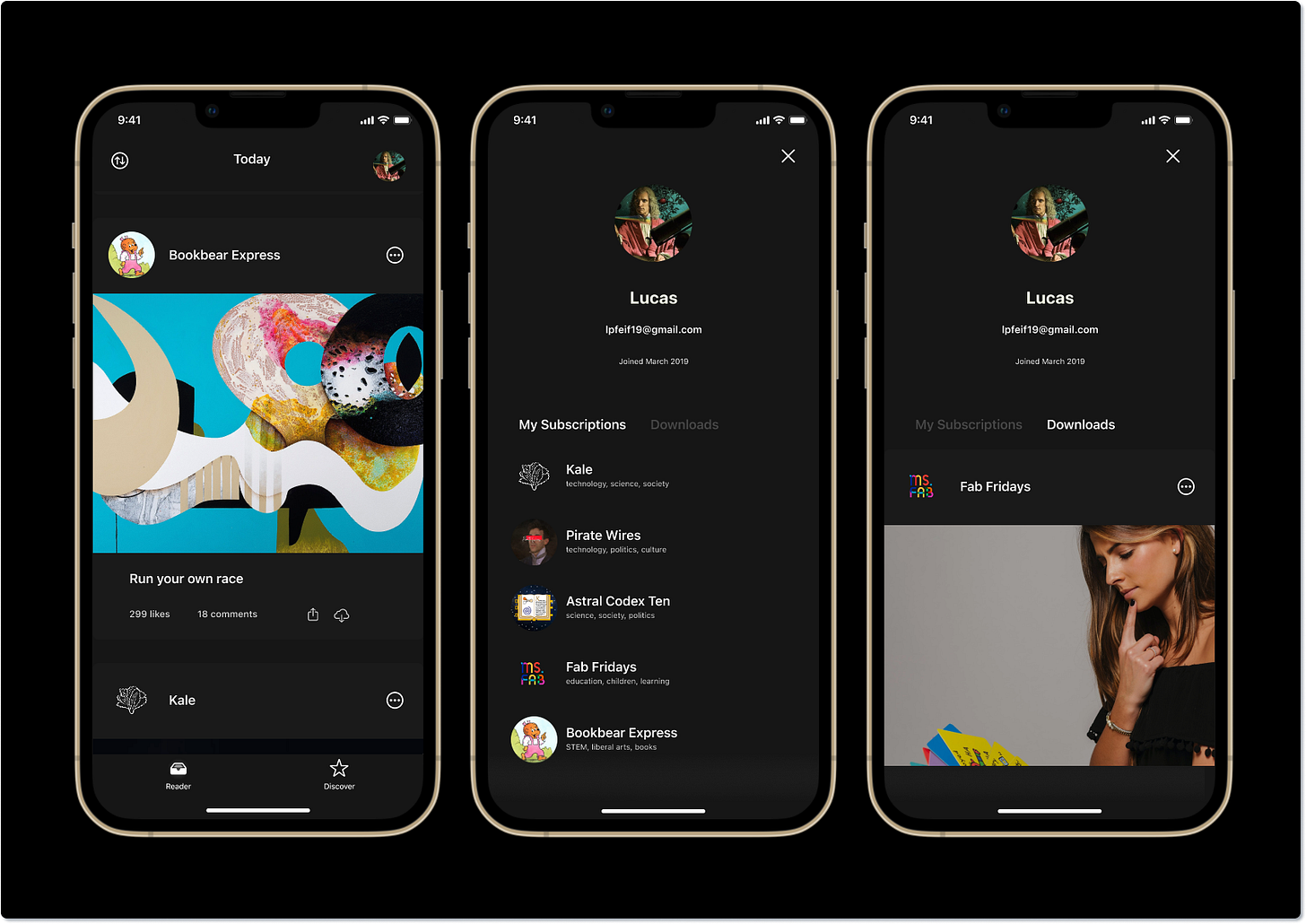Substack makes it simple for a writer to start an email newsletter that makes money from subscriptions. The focus on a subscription-based revenue model allows for long-term reader/writer relationships and for readers it means no ads in the content. Ads are an important part of the online economy, but they come at a cost.
For one, ads make viewing content like this:
It's like trying to read with the wind in your eyes reading an article in the New York Times, the Washington Post, or any ad-based publication that has advertisements all over the content.
In addition to a frustrating user experience for readers, if a business has no other revenue alternative, the platform tends to be aligned with maximized user engagement and attention. Substack co-founder Chris Best speaks to this being a core ethos for the creation of Substack1.
Writers seem to choose Substack to avoid the ad revenue model, direct relationships with their readers, and the freedom to take their reader list to other platforms at any time.
But what are some of the trade-offs for readers and writers on Substack?


One of the trade-offs that Substack readers and writers deal with is a lack of discovery and network effects for their writing. How can Substack improve discovery and network effects for readers and writers while adhering to its founding principles to avoid maximization of engagement or attention?
User experience research and case study: Substack Reader
First things first, Substack is only in the US so our studies are limited to this geography in scope. I also didn't get a chance to interview and test solutions with every Substack reader or writer. Lastly, the focus of this case study is on improving the experience for existing readers and writers on the platform as opposed to potential users or those on competing platforms.
Objectives
Social platforms are about tradeoffs and Substack is not for every writer and reader. On the contrary, how can Substack improve discovery and network effects for existing readers and writers while adhering to its founding principles to avoid maximization of engagement or attention? Further, what are the main issues and values for readers and writers on the platform? Are there opportunities for Substack by solving these problems for users?
Initial research and discoveries
Substack is not for everyone, who is it for, and what do these users value most?
My discoveries showed that Kale readers prefer to read on both mobile and their computer, but readers prefer consumption and discovery on mobile. I also surveyed a group of Substack readers, not just Kale readers, and in this sample, 4 out of 5 readers mentioned that they would be more likely to interact with content (likes and comments) in a native mobile platform than they would in email/web/mobile web reader combination. Lastly, while the Substack readers I asked preferred the direct subscription method for consumption, every single reader I spoke with mentioned the difficulty of finding new Substack publications, authors, and content without traditional social media platforms.
Most valued for writers on Substack
Equity in their work
Direct audience ownership
Less time spent on tech stack, more on writing
No boss, independence
Substack takes 10%, why not write on Ghost? Writers on Substack prefer to spend time writing vs. dealing with tech. What keeps the most elite writers on the platform? Direct audience ownership and sustainable income. What are writers missing on the platform? Networking and discovery.
Most valued for readers on Substack:
Ad-free content
Trust with writers they’re subscribed to
Control of content, choice
Substack competitors
Twitter just launched paid newsletters with their Revue acquisition.
Cons: Ads, less ownership
Pros: Strong discovery and network effects
Facebook just launched paid newsletters with a service called Bulletin
Cons: Ads, less ownership
Pros: Strong discovery and network effects
Medium which is a platform that pays writers from Medium platform subscriptions
Cons: less/no ownership of audience
Pros: Strong discovery and network effects
Mirror, a decentralized platform for writing, earning, and discovery where writers must be voted onto the platform from the Mirror community.
Cons: Most readers are unfamiliar with the platform, exclusive writer community
Pros: Unique discovery effects, complete ownership
Substack web and mobile web reader feedback
In late 2020, Substack launched their substack reader for web and mobile web. It’s a place to read the publications you’re subscribed to, but additionally, it’s a way to discover authors and publications.
Personally, I've found the Substack reader to be helpful when I'm on my computer, but prefer mobile for both consuming Substack content and discovering new writing and writers. So, I tried bookmarking the web-reader to an app icon on my phone like shown in this Verge article:
But I'm a stickler for native mobile applications, so I started to ask Kale readers through some shop talk how they interact with Substack content, writers, what platforms they use to do so, and when.
I interviewed Kale a subscriber Logan about how he uses the web and mobile web version of Substack reader. He said:
It's amazing getting writing to my email inbox for many reasons, even though I open most of the writing to consume in the mobile web reader. I also love how the feed inside the reader is curated of writing and podcasts I'm subscribed to, and especially to see if I'm caught up on the content I'm subscribed to. This is more difficult in my email inbox. I'm in love with the idea that the content I'm choosing to subscribe to is separate from discovering new content. It's much different than the other social media platforms I use, like Twitter, where I'm seeing content from people I follow and people I don't mixed together.
My biggest critiques of Substack are the difficulty in finding new writers and publications that might interest me without going to my other social platforms, again like Twitter. The other thing, which pisses me off, is that I don't like to use Substack on my computer and I'd like the reader so much more if it were a real iPhone app.
Would a native mobile reader help solve Logan's problems while improving discovery and network effects for existing readers and writers without abandoning founding principles to avoid maximization of engagement or attention?
What would the principles of a native Substack mobile reader be?
Reader and discover = 2 main features or functions
Reader and discover need to be separate
No ads
Reader incentivizes 'catching up' as opposed to 'one more scroll'
While we are trying to improve discovery and network effects for both writers and readers, it's important the native mobile reader prioritizes reader experience over all else. It's also important to remember that our research and discoveries to this point say readers on Substack value content choice and no ads more than anything.
Solutions and testing
When I had my conversation with Logan, I had created some basic screens to share from my initial research about Substack users.
The first thing that was validated when showing mocks for the native mobile reader were the contents home bar, or the two main features being discovered and reader. More options, Logan said, would be frustrating to see. Then, I presented two main versions of the reader: one displaying post images, and one without. Logan and 3/4 my interviewees preferred post images being displayed in reader.
At this point in interviews, I was focused on asking questions about what functionality was most important to users in reader. Interviewees continued to validate some of the discoveries we found earlier about Substack readers. They emphasized:
Control over content in this 'feed or inbox'
No ads
Incentivizes 'catching up' as opposed to 'one more scroll'
In initial interviews, I also had some discoveries. First, I showed these two main reader mocks, and the interviewee asked 'where is the download button on the 2nd option?'.
This prompted me to observe that other interviewees were curious about downloads too. As it turns out, one of the major bonuses of getting Substack content in email is that it can be downloaded for consumption without connection (flying for example).
I took these conversations back to Figma.
Refined solutions and user stories
For the next version of the mobile reader, I wanted to take it a step further and have a prototype. We'll call it (v1.0). The main objective of v1.0 is to create flows for our main user stories for our next set of testing, research, and discoveries:
Catching up in reader:
Reading a post:
Discover new writing, writers, and publications:
My downloads:
Next steps
Let me know what you think about v1.0, and let’s test our prototype for the next set of improvements for our native Substack mobile reader.
Do you think a native mobile reader would Substack improve discovery and network effects for readers and writers while adhering to its founding principles to avoid maximization of engagement or attention?
What are the things that you value the most about the Substack platform? What are your most significant issues?
Would a native mobile reader improve your experience as a reader on Substack?
-LUCAS



